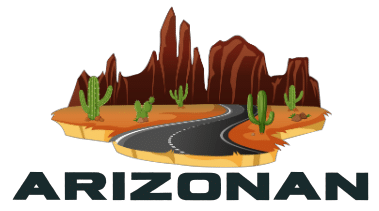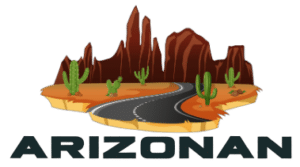Avondale, Arizona
Introduction
Avondale is a vibrant city located in Maricopa County, Arizona. With a population of over 87,000 people, Avondale is a rapidly growing community that offers a great quality of life, economic opportunities, and an array of recreational activities. The city’s diverse population and proximity to Phoenix make it a desirable place to live and work.
Thank you for reading this post, don't forget to subscribe!Avondale was first settled in the 19th century by William “Billy” G. Moore, who arrived in the area in 1880 and built a stagecoach stop. The settlement was originally named Coldwater because of the nearby Coldwater Springs. In the early 1900s, the town began to grow as the Roosevelt Dam was constructed, bringing water to the area and enabling agriculture to flourish. In 1946, the town was officially incorporated as Avondale, named after the Avondale Ranch owned by a local resident.
Over the years, Avondale has grown from a small farming community to a bustling city with a diverse economy. The completion of the Interstate 10 freeway in the 1980s brought increased access and growth to the city. Today, Avondale continues to expand, with new residential, commercial, and industrial developments.
Avondale is conveniently located approximately 15 miles west of downtown Phoenix, making it an ideal destination for those who work or play in the metropolitan area. The city is easily accessible via the Interstate 10 and Loop 101 freeways.
The economy in Avondale is diverse and thriving. Major industries in the area include healthcare, retail, education, hospitality, and light manufacturing. Some of the city’s top employers are Banner Estrella Medical Center, West Valley Hospital, Avondale Elementary School District, and the City of Avondale.
The city is also home to several business parks, attracting a variety of companies and industries. In recent years, Avondale has experienced significant commercial and industrial growth, leading to increased job opportunities for residents.
Avondale offers a range of educational opportunities for residents of all ages. The city is served by the Avondale Elementary School District, which operates seven elementary schools and a junior high school. High school students attend the Agua Fria Union High School District, which includes Westview High School and La Joya Community High School.
For higher education, Estrella Mountain Community College and Rio Salado College offer a variety of degree and certificate programs. Additionally, several universities, including Arizona State University, are within driving distance of Avondale.
Residents of Avondale have access to several healthcare facilities, including Banner Estrella Medical Center, West Valley Hospital, and Abrazo West Campus. These hospitals provide a wide range of medical services, including emergency care, surgery, maternity services, and rehabilitation.
There are also several urgent care centers and medical clinics throughout the city, ensuring residents can receive quality healthcare close to home.
The real estate market in Avondale is diverse, offering a range of housing options for residents. The city features a mix of single-family homes, townhomes, and apartments, with varying price points to accommodate different budgets. New home construction is prevalent in Avondale as the city continues to expand.
Things to Do
Avondale offers a variety of recreational activities and attractions for residents and visitors alike. The city is home to several parks, including Festival Fields, Friendship Park, and Mountain View Park, which offer playgrounds, sports fields, and picnic areas.
Attractions and Points of Interest
Some popular attractions in Avondale include:
– Phoenix Raceway: A premier motorsports venue that hosts NASCAR, IndyCar, and other racing events.
– Wildlife World Zoo, Aquarium & Safari Park: A family-friendly destination featuring exotic animals, aquarium exhibits, and a safari park.
– Estrella Mountain Regional Park: A scenic park offering hiking, picnicking, and horseback riding opportunities.
Places to Stay
Visitors to Avondale have a variety of lodging options, including hotels, motels, and vacation rentals. Some popular accommodations in the area include Hilton Garden Inn, Homewood Suites by Hilton, and Home2 Suites by Hilton.
Government Structure
The City of Avondale operates under a council-manager form of government, with a mayor and six council members elected at-large to serve four-year terms. The city manager is responsible for the day-to-day operations and administration of the city.
City of Avondale:
Clubs and Organizations
There are numerous clubs and organizations in Avondale that cater to various interests and needs. Some examples include:
– Avondale Civic Center Library: Offers programs and resources for all ages, including book clubs, storytimes, and computer classes.
– Avondale Youth Advisory Commission: A group of local teens who work together to make a positive impact on the community through volunteerism and civic engagement.
Golf Courses
Golf enthusiasts will find several golf courses in and around Avondale, including:
– Coldwater Golf Club: An 18-hole championship course with beautiful views and challenging play.
– Palm Valley Golf Club: Offers two 18-hole courses, the Palms Course and the Lakes Course, both providing a unique golfing experience.
– Tres Rios Golf Course at Estrella Mountain Park: A picturesque course set against the backdrop of the Estrella Mountains.
Hiking
Avondale is surrounded by natural beauty, making it an ideal location for hiking and exploring the outdoors. Estrella Mountain Regional Park, located just south of the city, offers over 33 miles of trails for hiking, mountain biking, and horseback riding.
Quality of Life
Avondale boasts a high quality of life for its residents, with a strong sense of community, excellent schools, and a variety of recreational opportunities. The city’s diverse population and growing economy provide a vibrant and dynamic environment for both businesses and residents.
Transportation
The city of Avondale is well-connected, with easy access to the Interstate 10 and Loop 101 freeways. For public transportation, Valley Metro provides bus service within Avondale and the surrounding areas, connecting to the greater Phoenix metropolitan area.
Valley Metro:
Shopping
Avondale offers a variety of shopping options, from major retail centers to charming local boutiques. Some popular shopping destinations include:
– Gateway Pavilions: A large retail center featuring a variety of stores, restaurants, and entertainment options.
– The Market at Estrella Falls: A shopping center with popular retailers and dining establishments.
– Historic Avondale: A walkable district offering a mix of local shops, art galleries, and restaurants.
Art and Culture
Avondale is home to a thriving arts and culture scene, with numerous galleries, public art installations, and cultural events throughout the year. The Avondale Civic Center Library hosts regular art exhibits, while the city’s public art program showcases local artists and enhances the community’s aesthetic appeal.
Climate
Avondale enjoys a warm desert climate, with hot summers and mild winters. The city experiences over 300 days of sunshine each year, making it an ideal location for outdoor activities and events.
Community Involvement
The city of Avondale encourages community involvement through a variety of programs and initiatives, including neighborhood associations, volunteer opportunities, and community events. The city also hosts regular Town Hall meetings, allowing residents to engage with local government and stay informed about city projects and developments.
Sports and Recreation
In addition to its many parks and recreational facilities, Avondale is home to the American Sports Centers-Avondale, a state-of-the-art indoor sports complex offering basketball, volleyball, and other sports activities.
Dining and Nightlife
Avondale offers a diverse range of dining options, from casual eateries to fine dining establishments. The city’s growing culinary scene includes a mix of local favorites and popular chain restaurants, ensuring a variety of options to suit all tastes. Nightlife options include bars, lounges, and live entertainment venues.
Local Festivals and Events
Avondale hosts a variety of festivals and events throughout the year, celebrating the city’s culture and community spirit. Some popular events include:
– Avondale Fiesta: A celebration of the city’s Hispanic heritage, featuring live music, food vendors, and family-friendly activities.
– WinterFest: An annual holiday event with a tree lighting ceremony, ice skating, and seasonal entertainment.
– Tres Rios Nature Festival: A weekend event showcasing the area’s wildlife, natural resources, and outdoor recreational opportunities.
Notable Residents
Avondale has been home to several notable residents, including:
– Emma Stone: Academy Award-winning actress who grew up in the city before moving to Los Angeles to pursue her acting career.
– Mitch Garcia: Professional soccer player and former member of the United States national team.
Sustainability and Environmental Initiatives
The city of Avondale is committed to sustainability and environmental stewardship, with numerous initiatives aimed at conserving resources and protecting the environment. These efforts include recycling programs, water conservation measures, and the development of environmentally friendly parks and open spaces.
Additional Attractions and Points of Interest
– Base & Meridian Wildlife Area: A natural area located along the Gila River, offering opportunities for wildlife viewing, birdwatching, and fishing.
– Avondale Friendship Park Japanese Garden: A peaceful garden showcasing traditional Japanese landscaping elements, including a koi pond, stone lanterns, and a tea house.
Farmers Markets and Community Gardens
Avondale residents can enjoy fresh, locally grown produce at farmers markets and community gardens throughout the city. Some popular locations include:
– Avondale Farmers Market: A seasonal market offering fresh produce, baked goods, and artisan crafts from local vendors.
– Avondale Community Garden: A communal garden where residents can grow their own fruits and vegetables, promoting sustainability and healthy living.
Libraries and Cultural Institutions
In addition to the Avondale Civic Center Library, the city is also home to the Sam Garcia Western Avenue Library, which offers a range of resources and services for residents, including computer access, educational programs, and a diverse collection of books and media.
Youth Programs and Activities
The city of Avondale is committed to providing a variety of programs and activities for youth, promoting healthy lifestyles, educational enrichment, and social development. Some examples include:
– Avondale After-School Program: Offers homework assistance, arts and crafts, physical activities, and more for students in kindergarten through eighth grade.
– Avondale Youth Sports: Provides opportunities for youth to participate in various sports, including soccer, basketball, and baseball.
Senior Services
Avondale is dedicated to meeting the needs of its senior population, offering a range of services and programs designed to enhance the quality of life for older adults. The Avondale Senior Center provides a welcoming space for socializing, learning, and staying active, with programs such as fitness classes, art workshops, and day trips.
Emergency Services
The city of Avondale is served by the Avondale Police Department and the Avondale Fire Department, ensuring public safety and providing emergency services to residents.
Avondale Police Department:
Avondale Fire Department:
Parks and Recreation Department
The Avondale Parks and Recreation Department manages the city’s parks, recreational facilities, and community programming. The department strives to enhance the quality of life for residents by providing diverse opportunities for leisure, wellness, and social engagement.
Volunteer Opportunities
Residents interested in giving back to their community can participate in a variety of volunteer opportunities offered by the city and local organizations. Some examples include:
– Avondale Adopt-a-Street Program: Volunteers commit to cleaning and maintaining a designated street in the city, helping to keep Avondale beautiful and litter-free.
– Avondale Neighborhood Pride Program: Supports residents in organizing neighborhood improvement projects, such as cleanups, landscaping, and painting.
Green Living and Sustainability Resources
The city of Avondale offers a variety of resources and information for residents interested in green living and sustainability, including:
– Avondale Green Living Guide: A comprehensive guide to sustainable living, covering topics such as energy efficiency, water conservation, and waste reduction.
– Avondale Solar Partnership: A program that assists residents in installing solar panels on their homes, reducing energy costs and supporting renewable energy.
Overall, Avondale, Arizona, is a thriving community with a rich history and a promising future. The city’s commitment to providing a high quality of life, diverse economic opportunities, and a range of recreational and cultural amenities make it a desirable place to live, work, and play.

